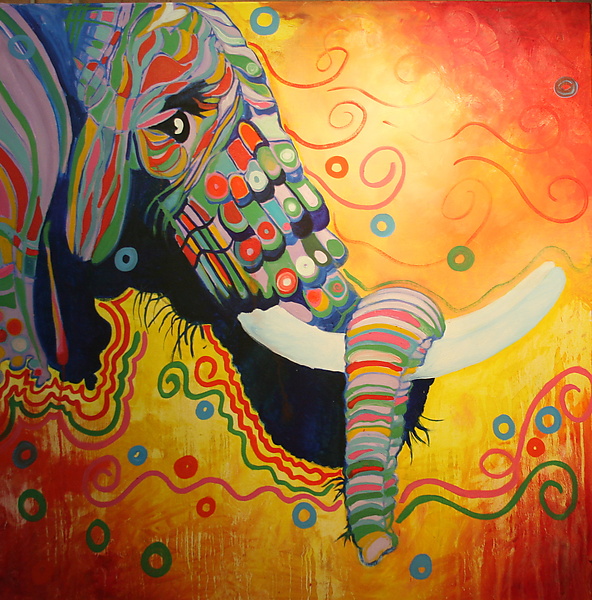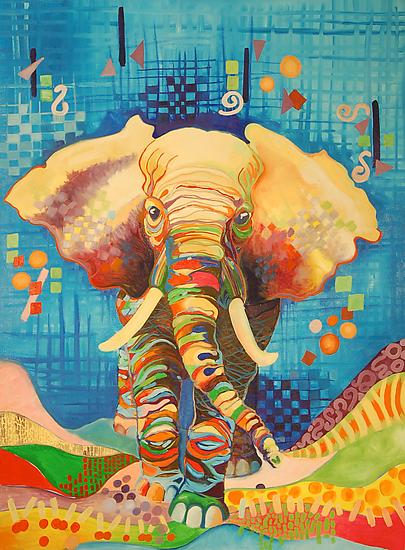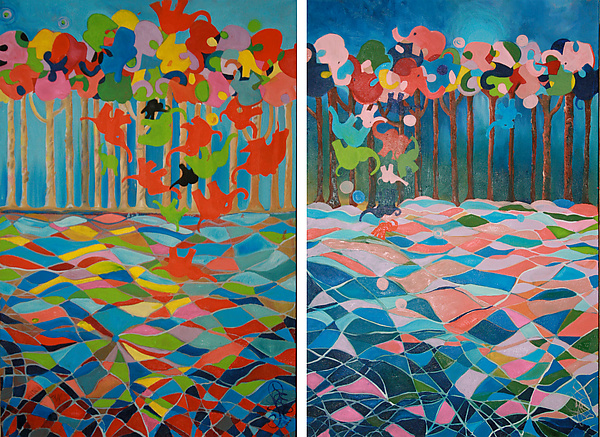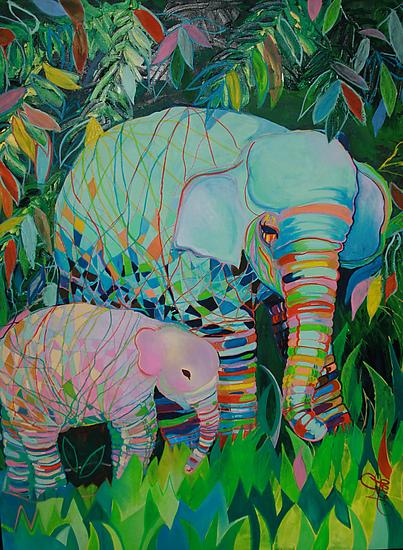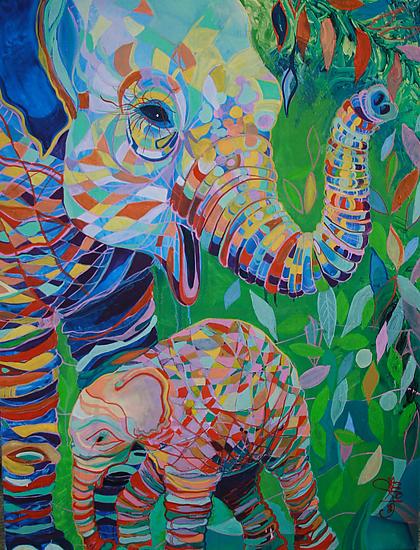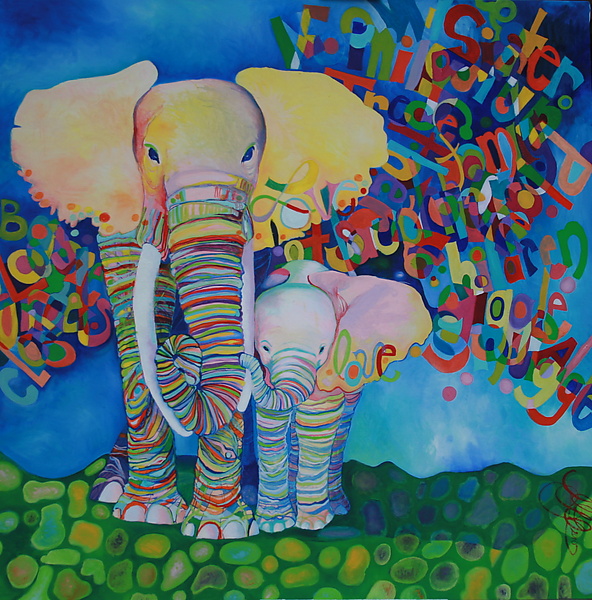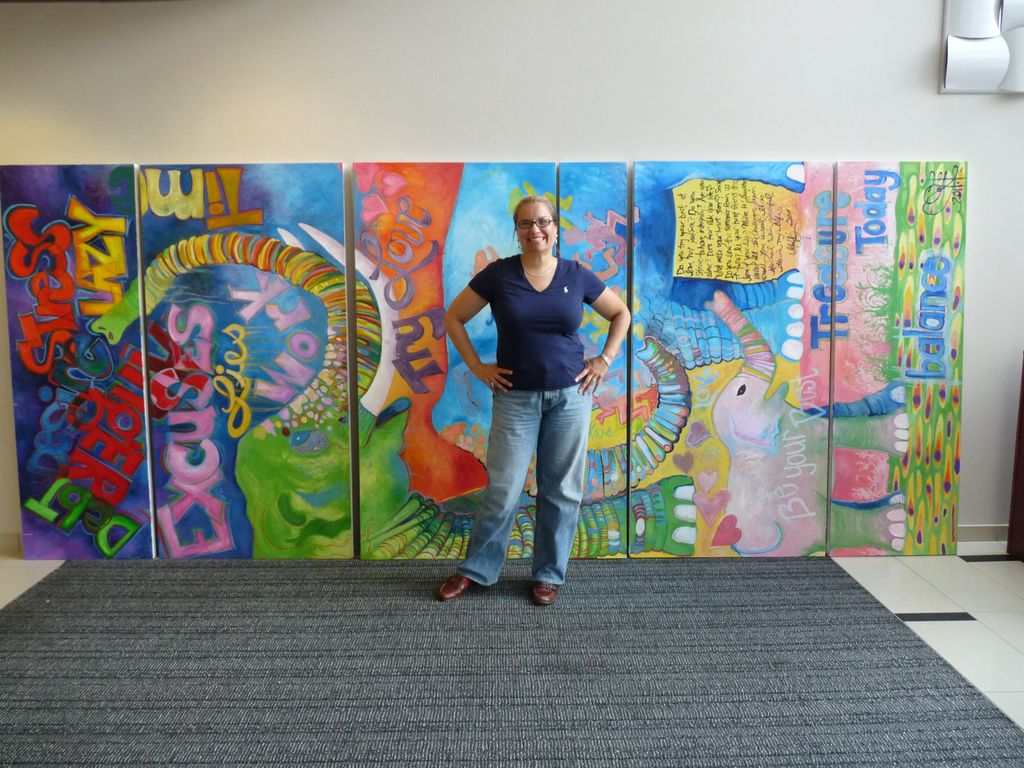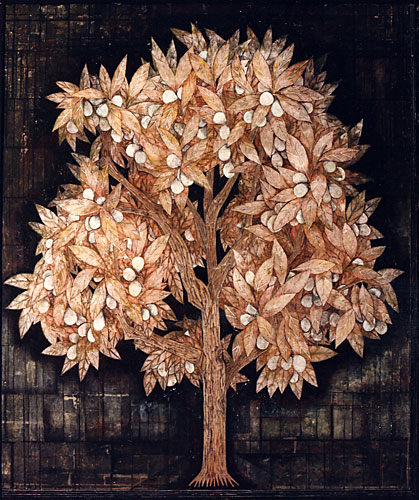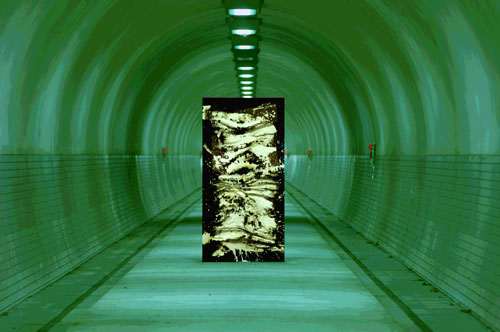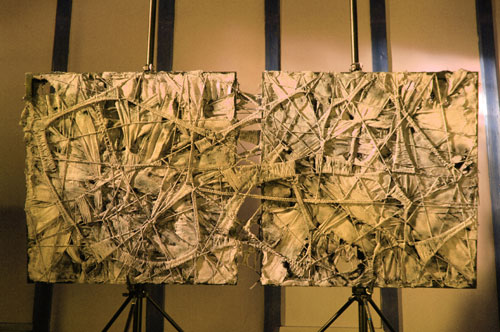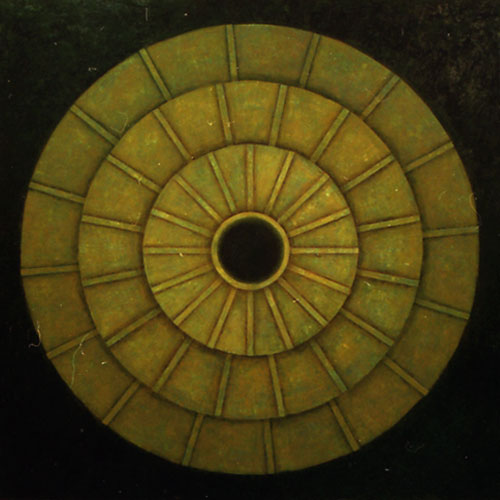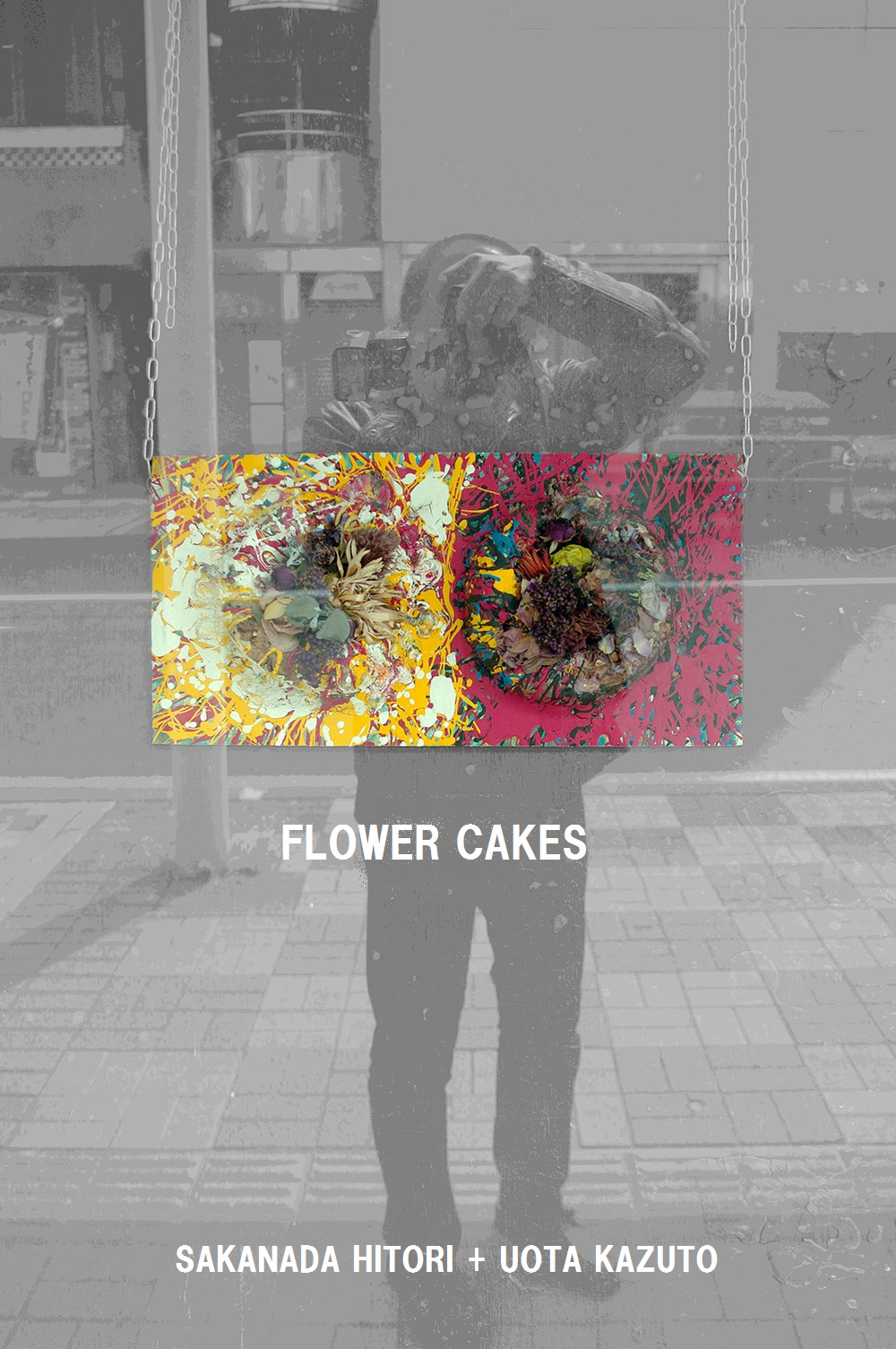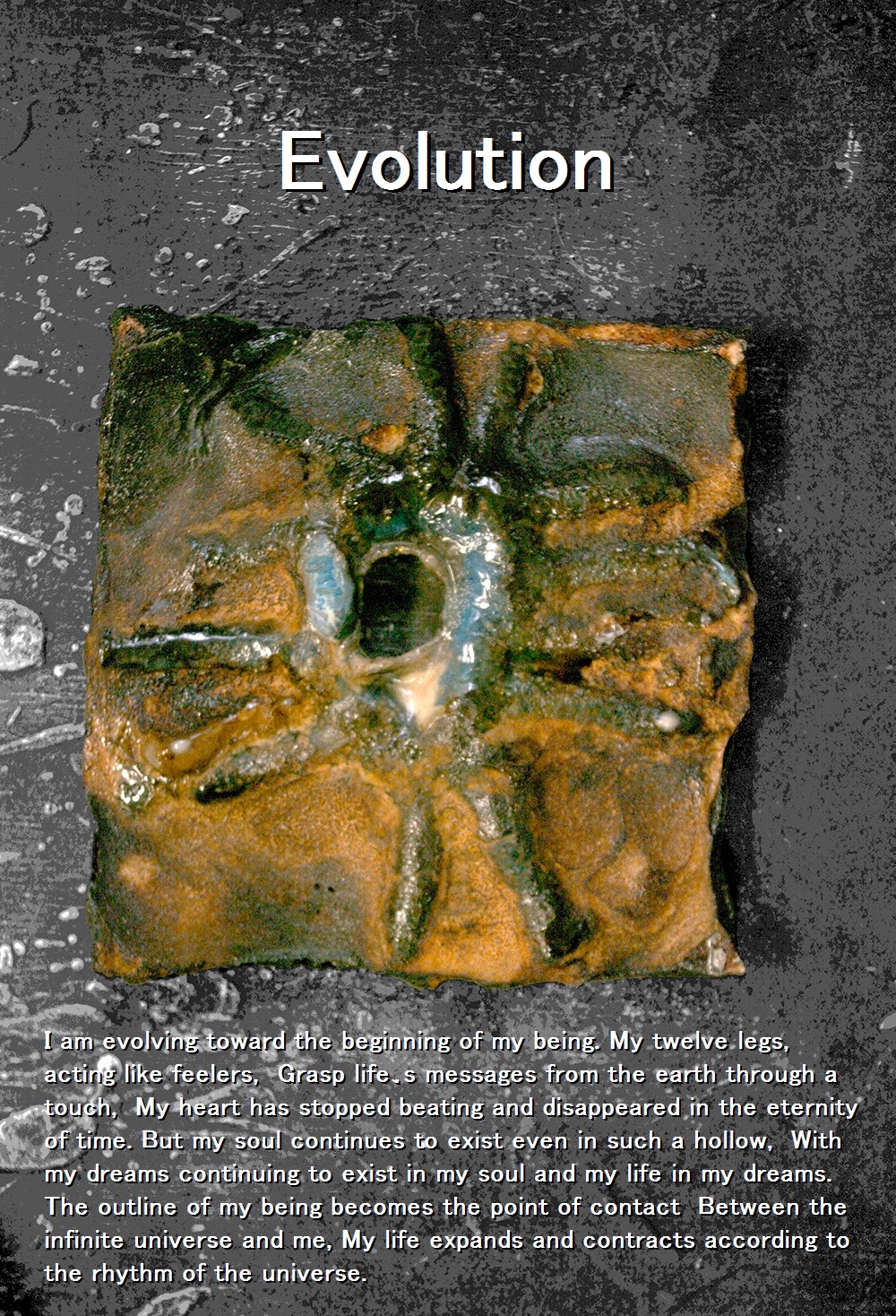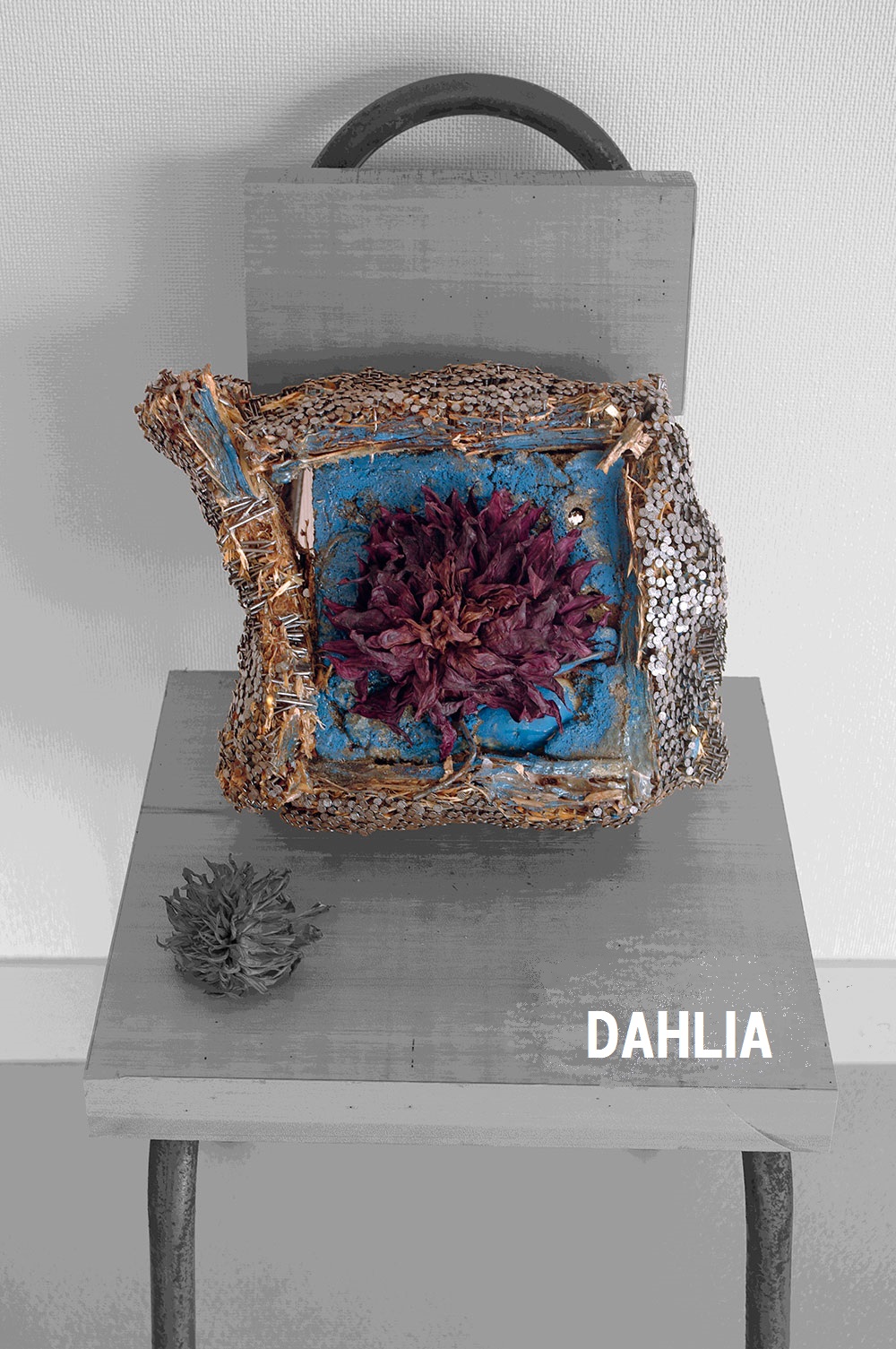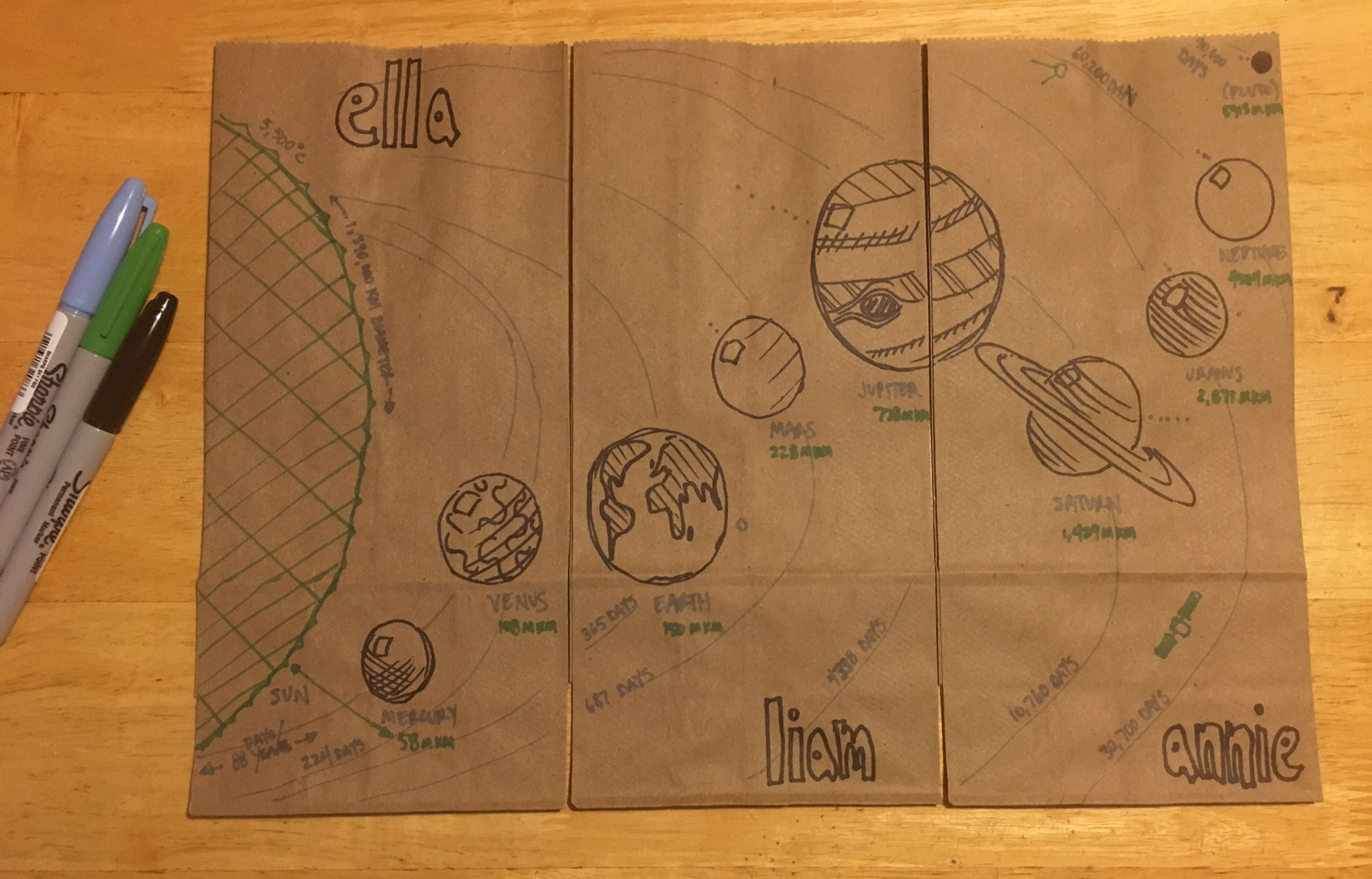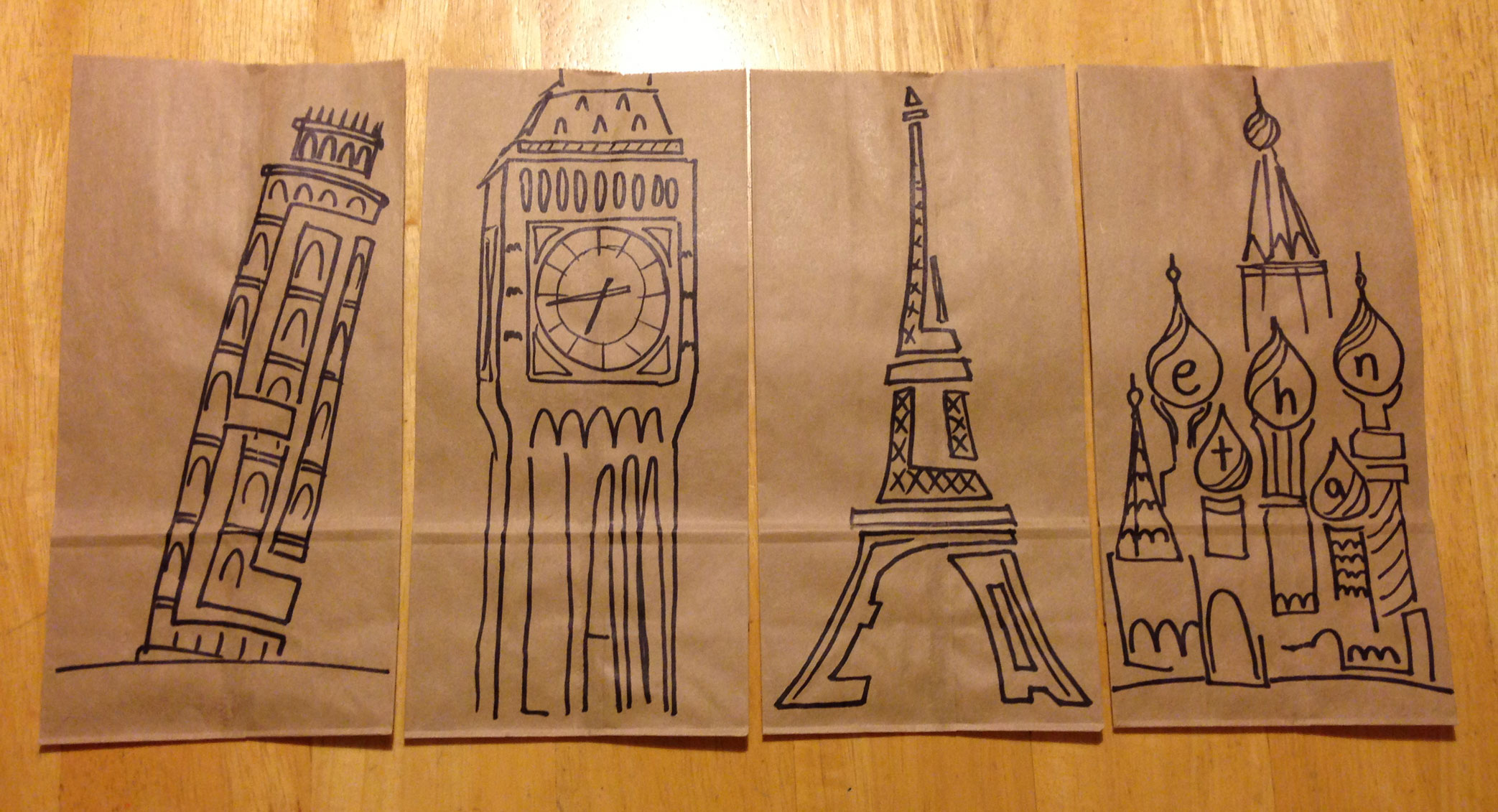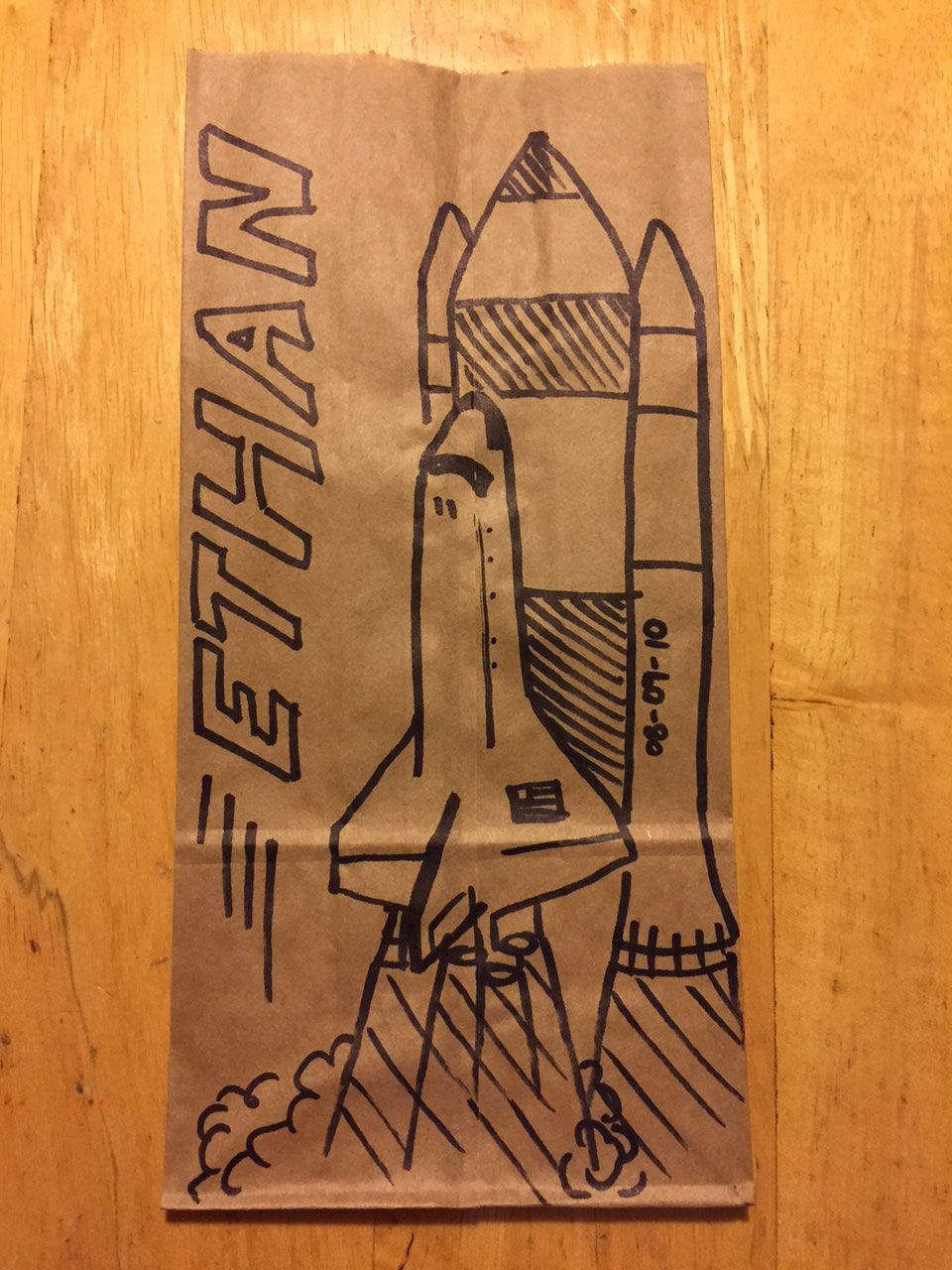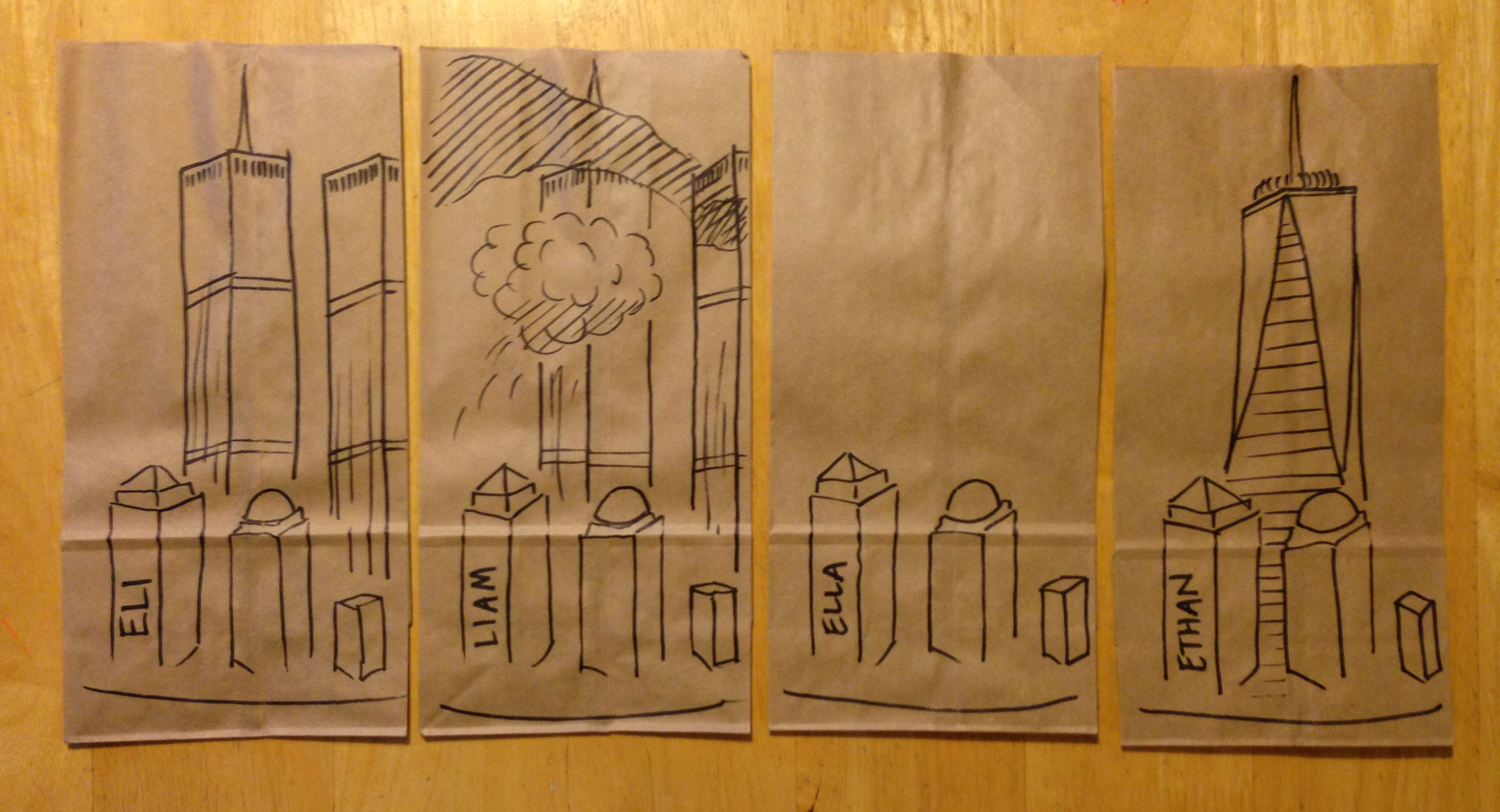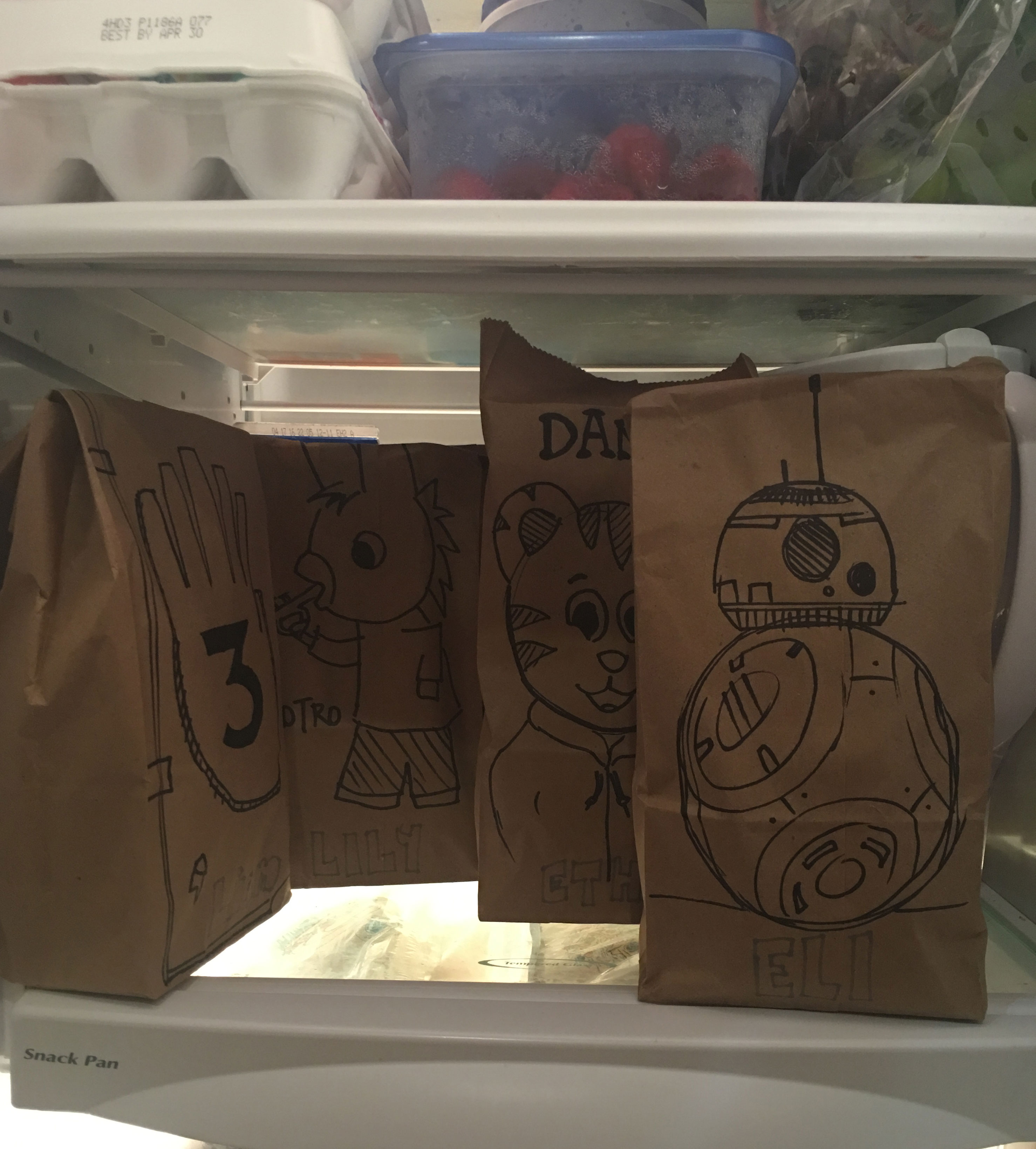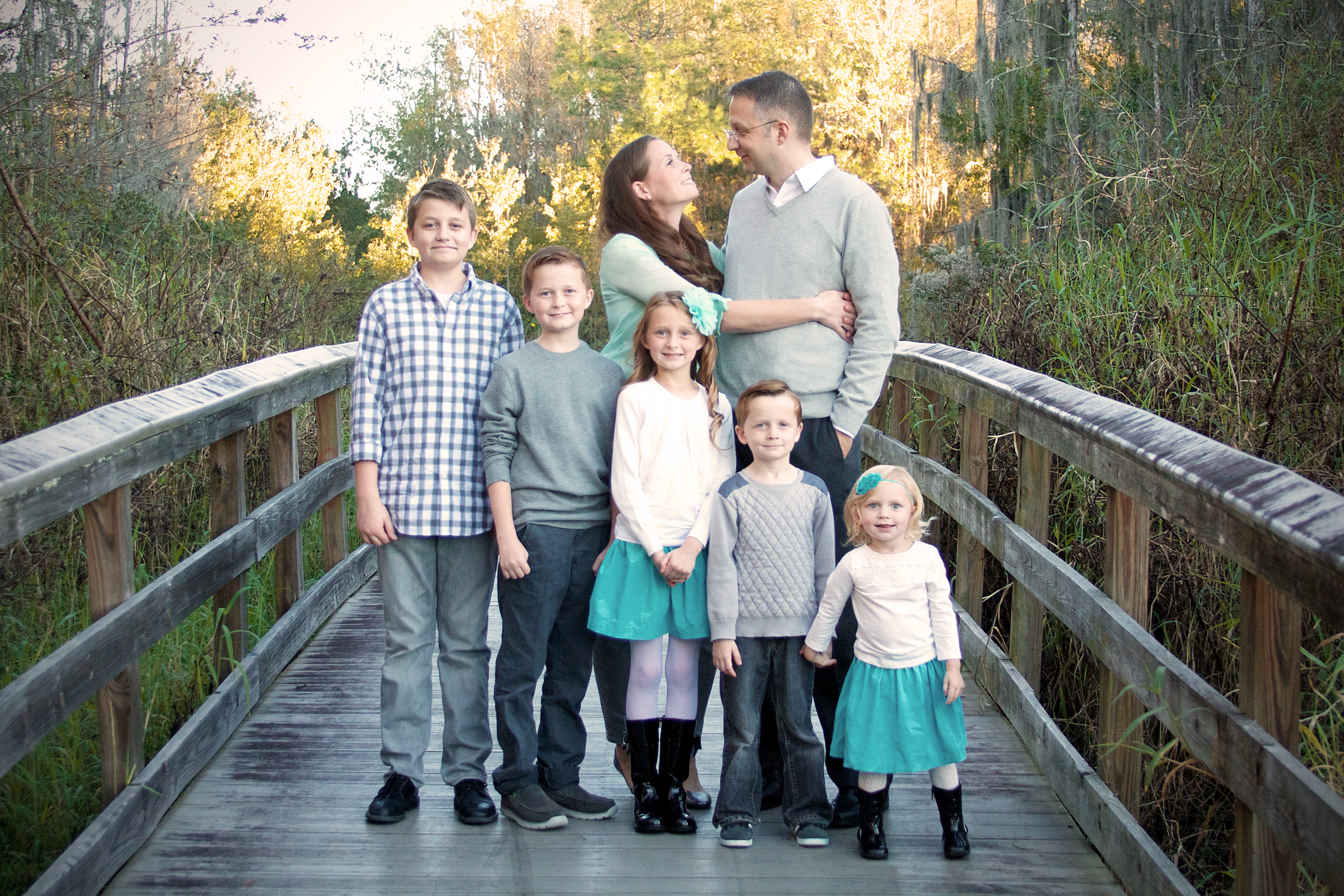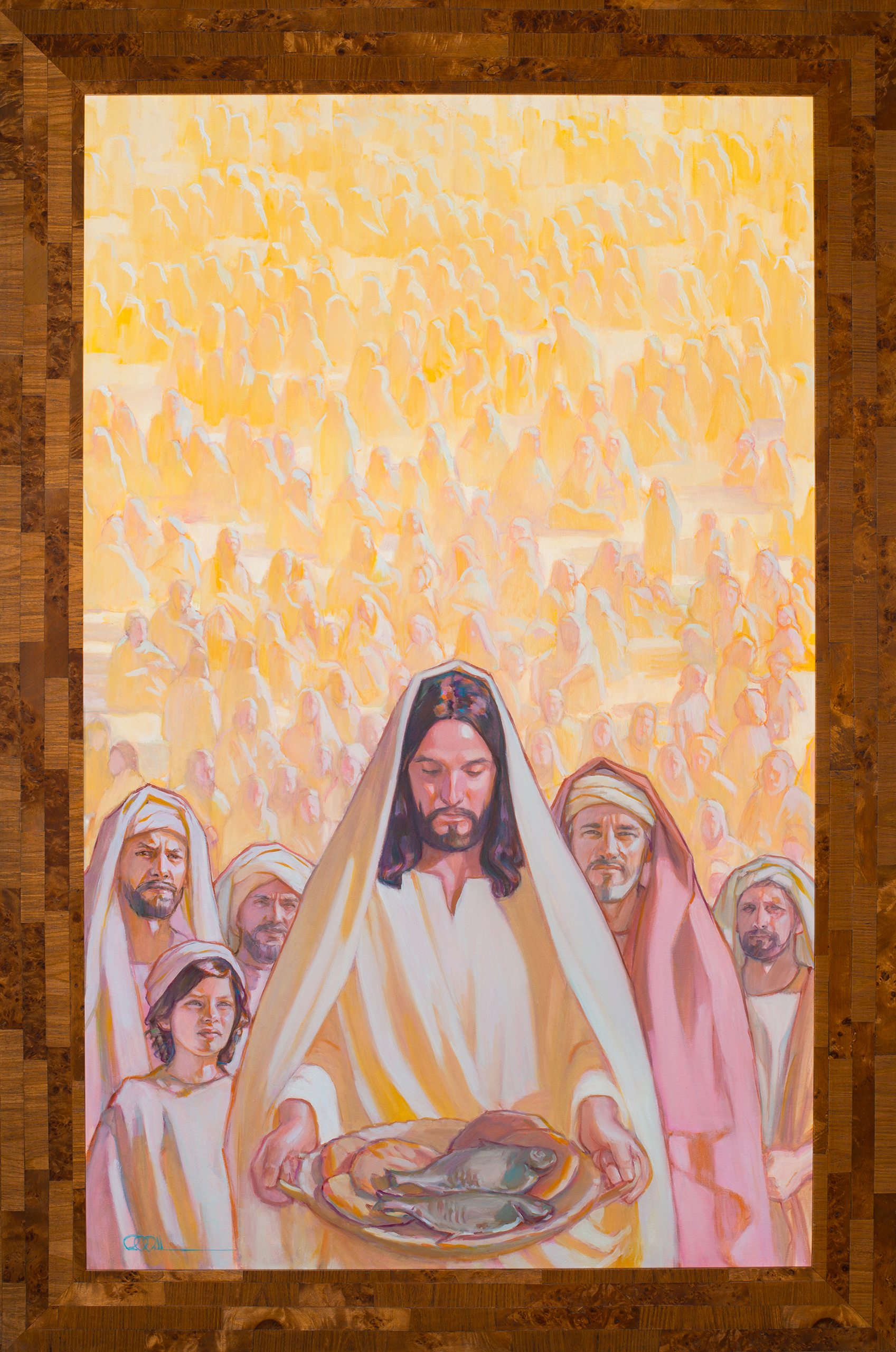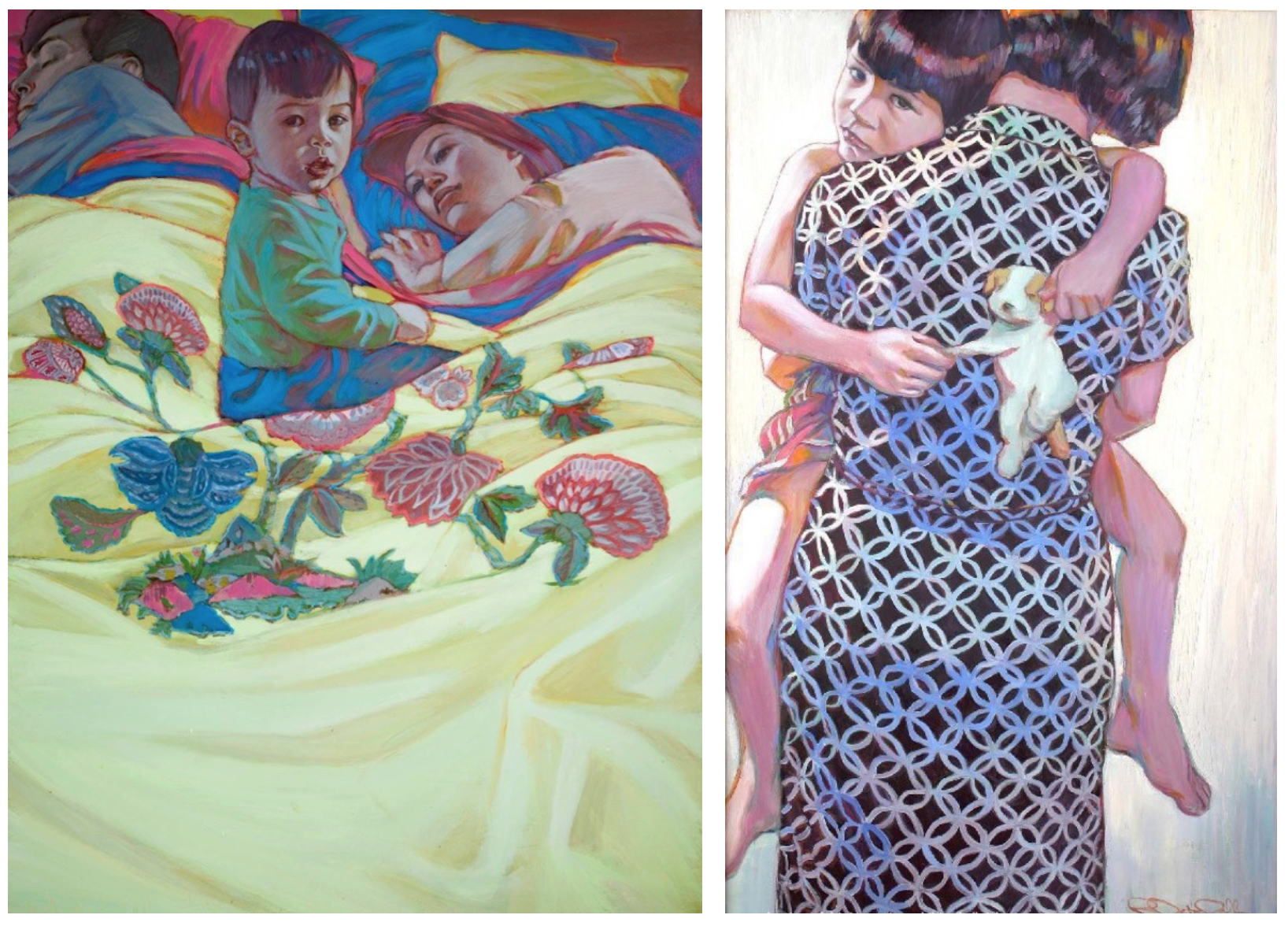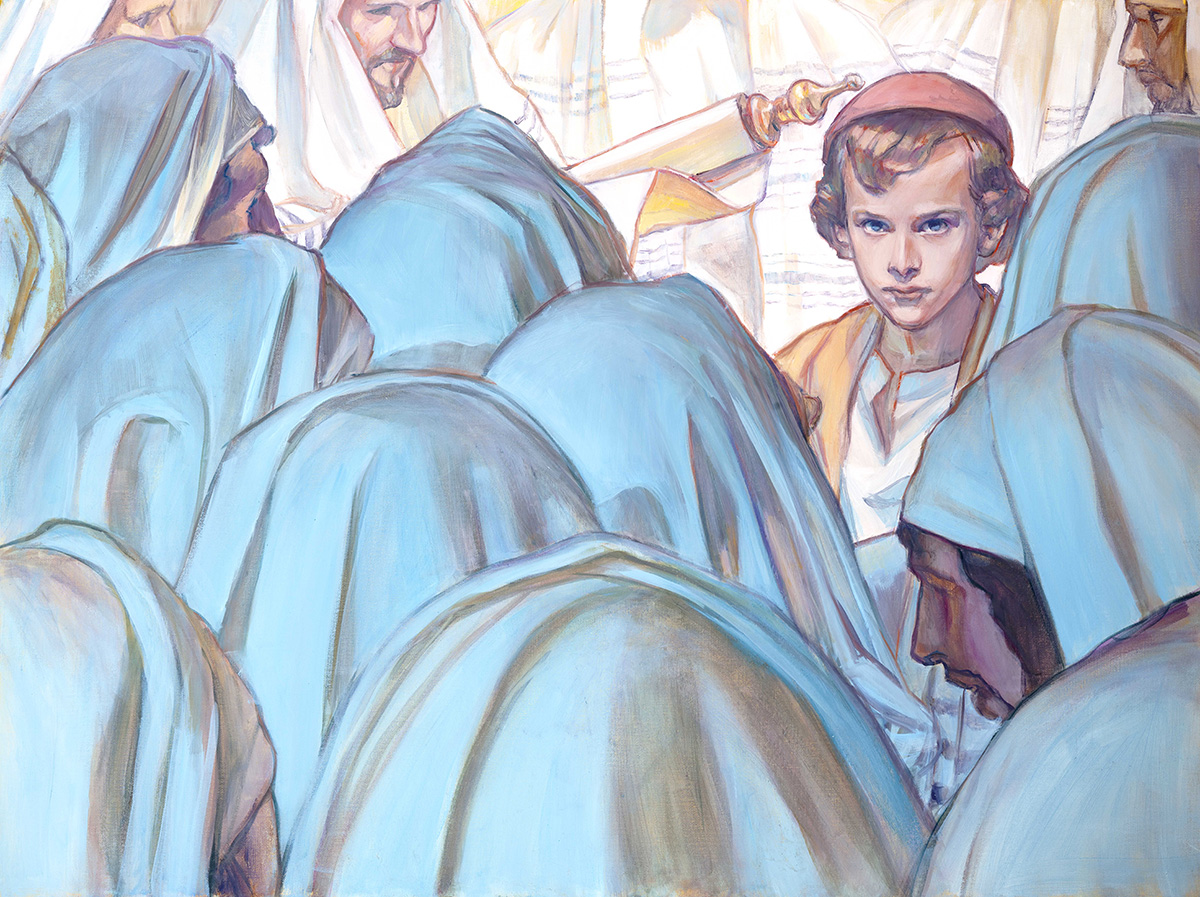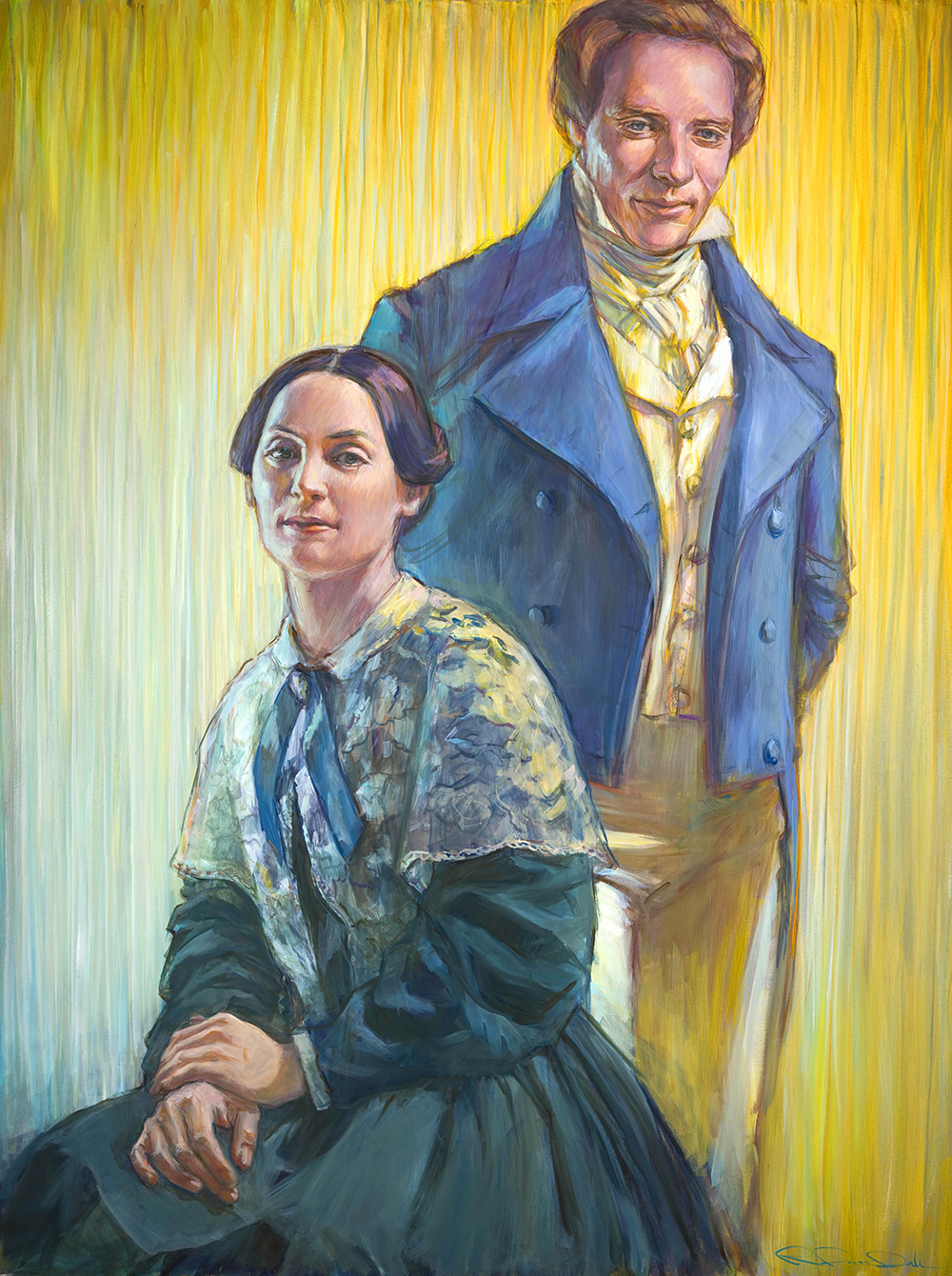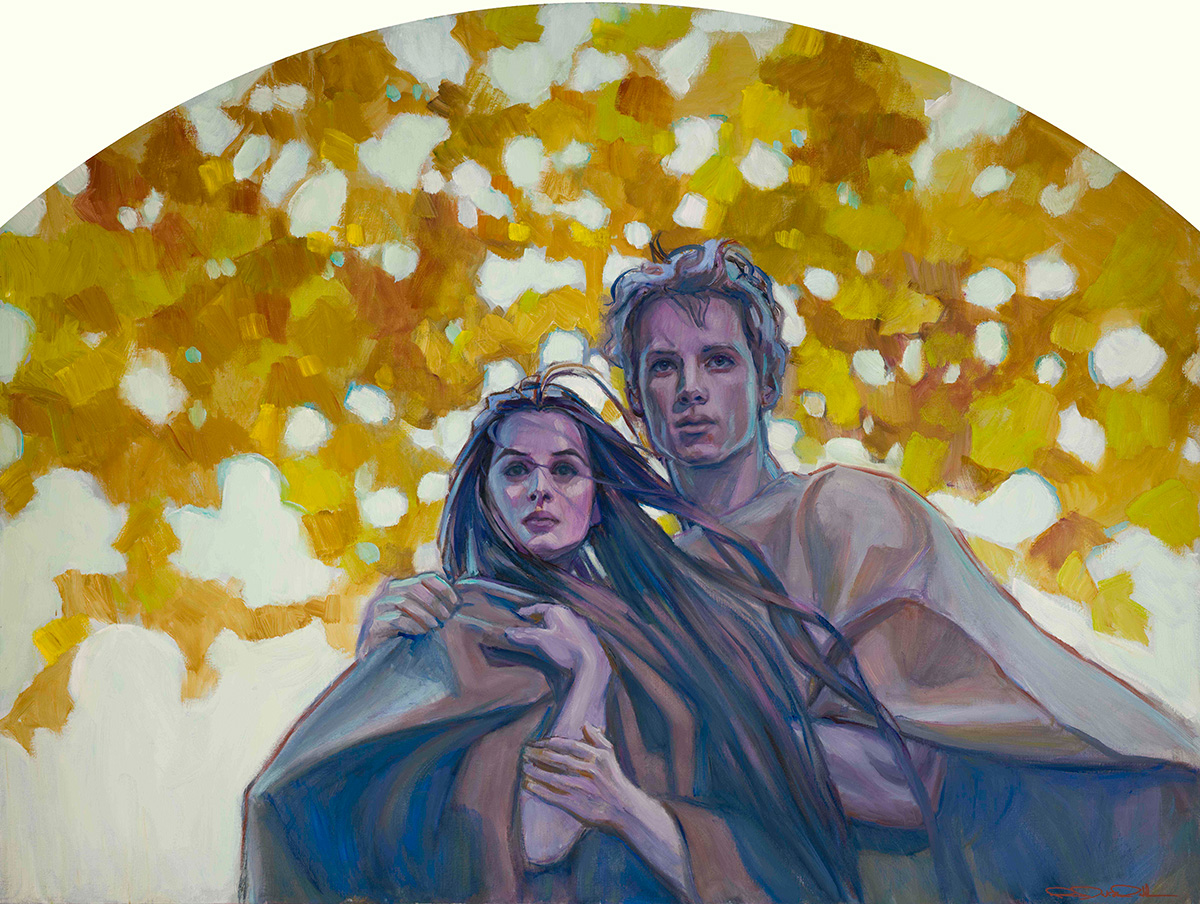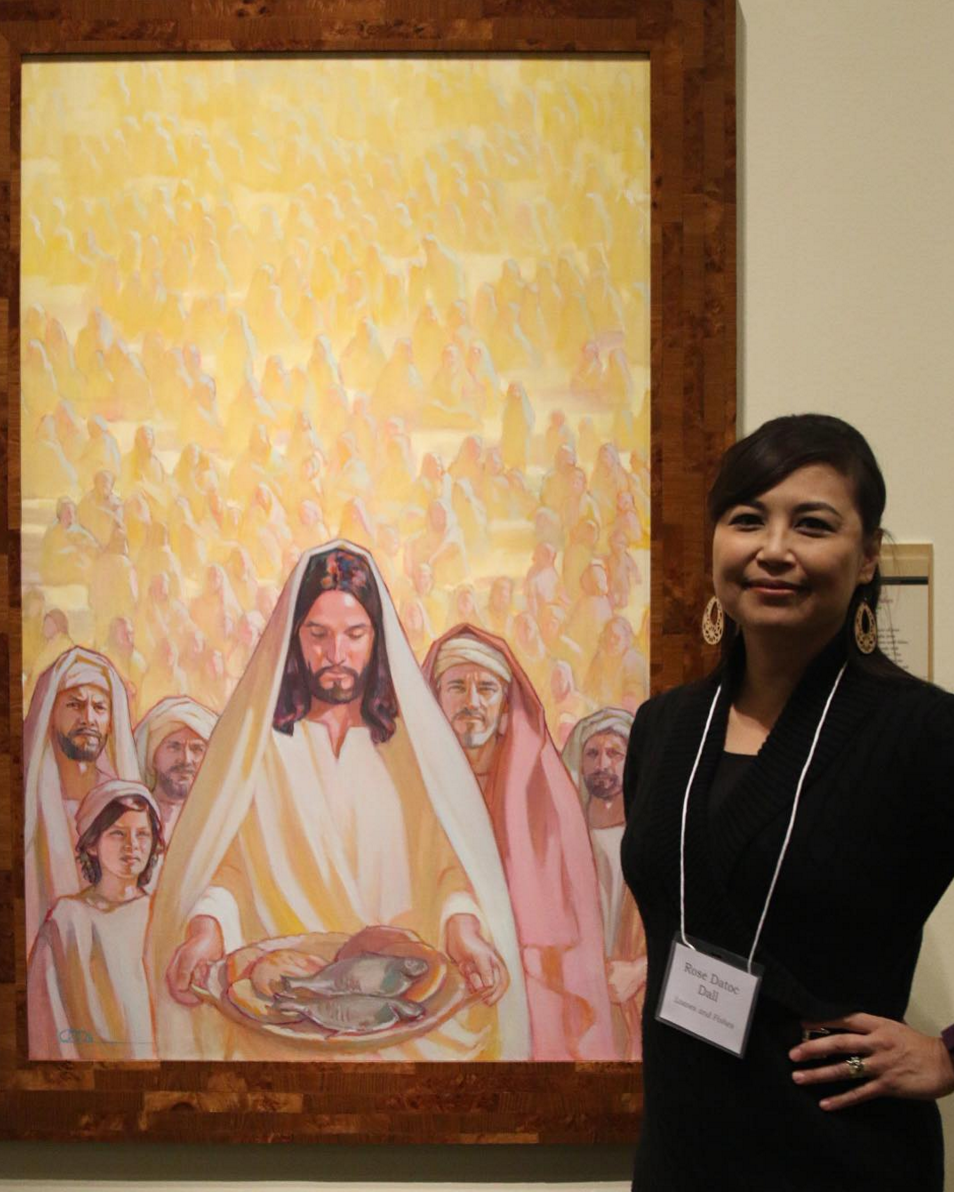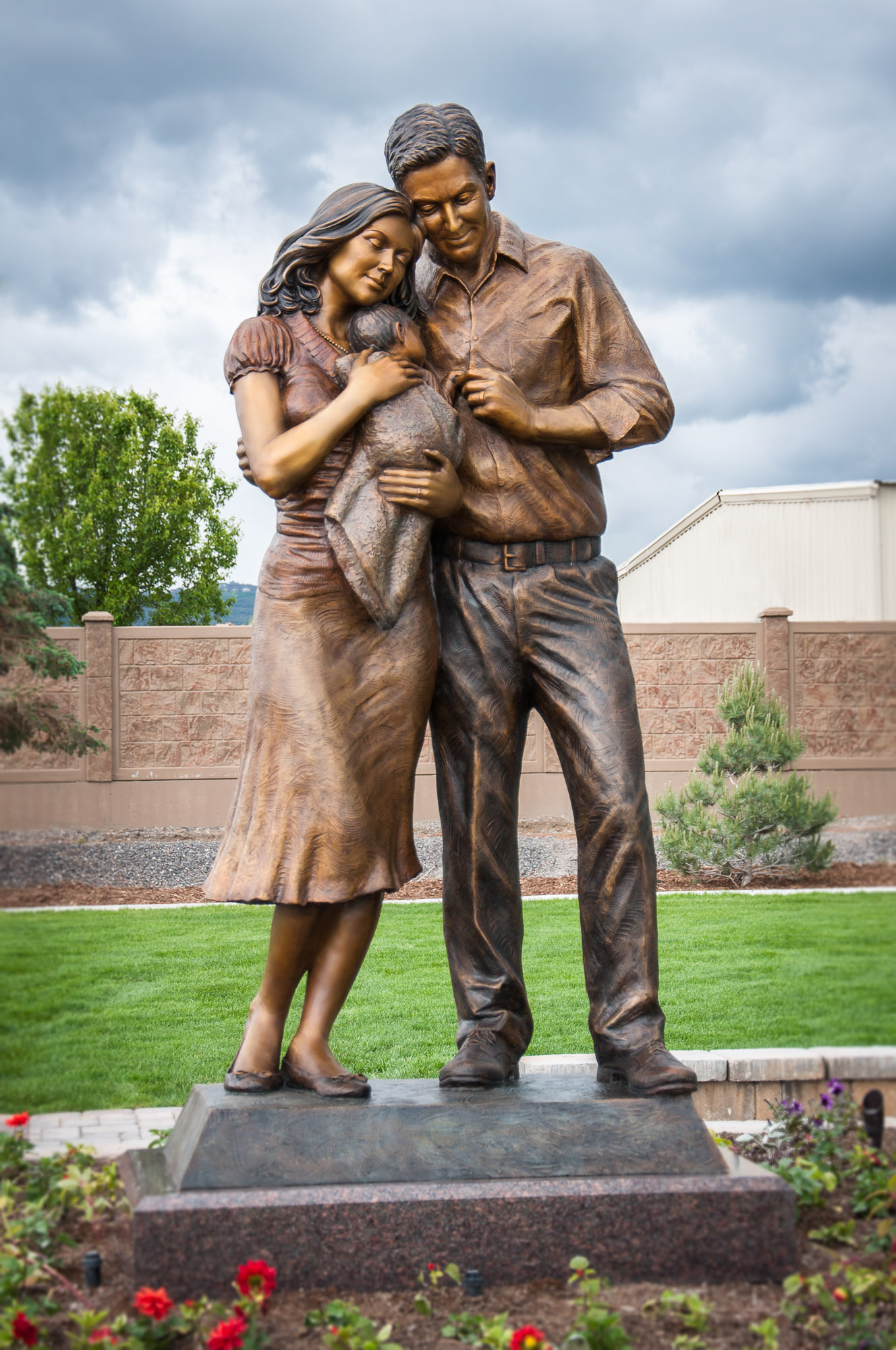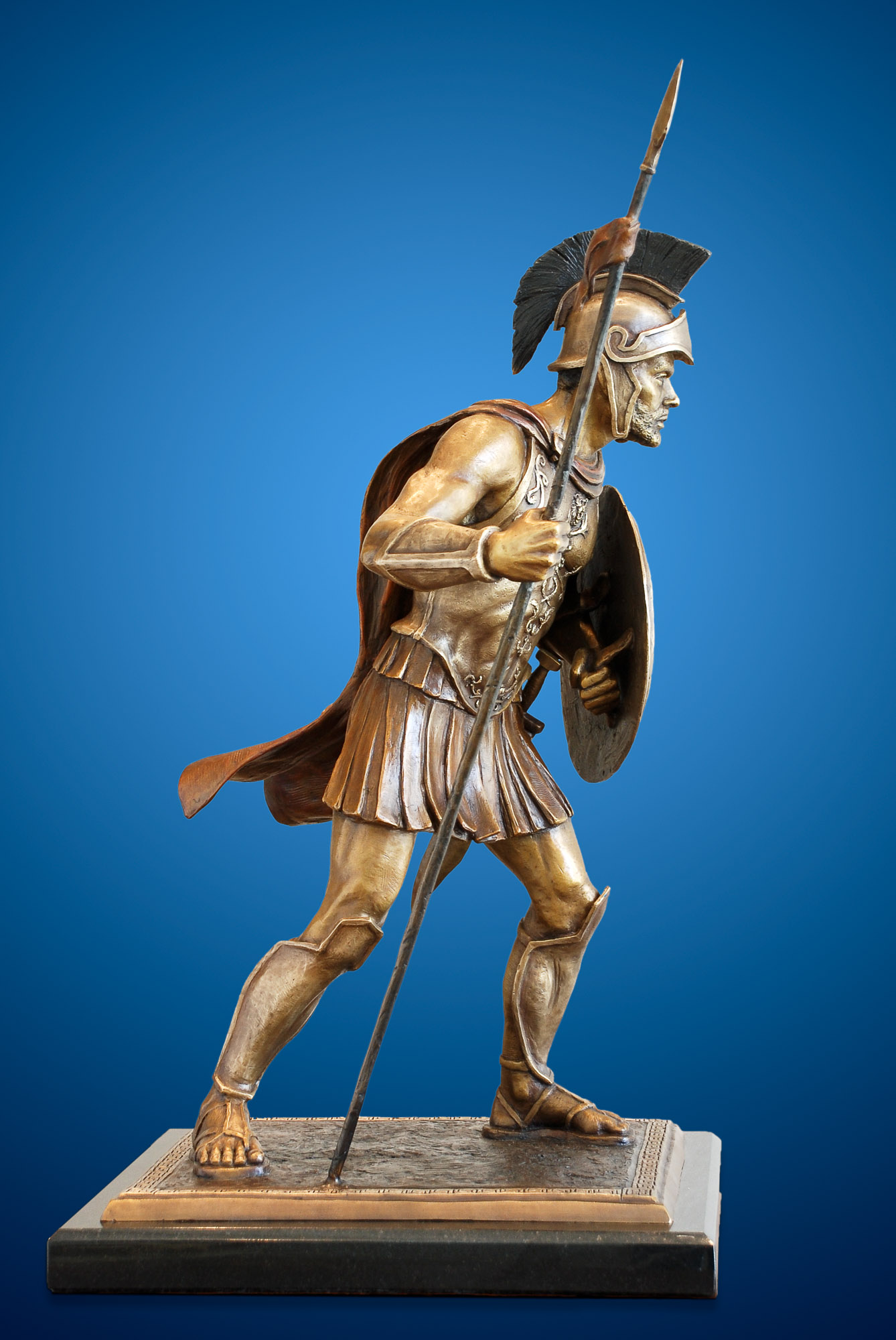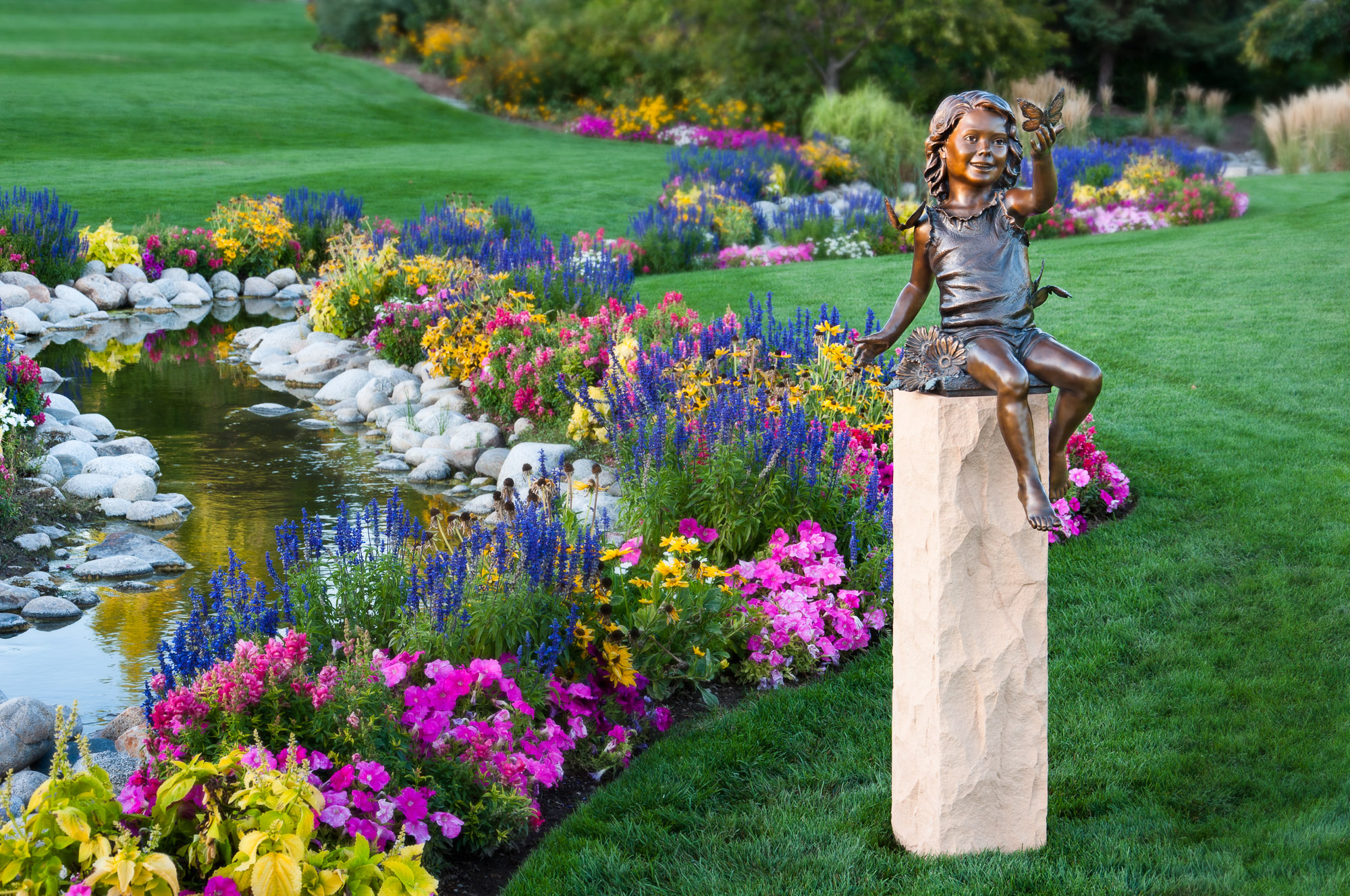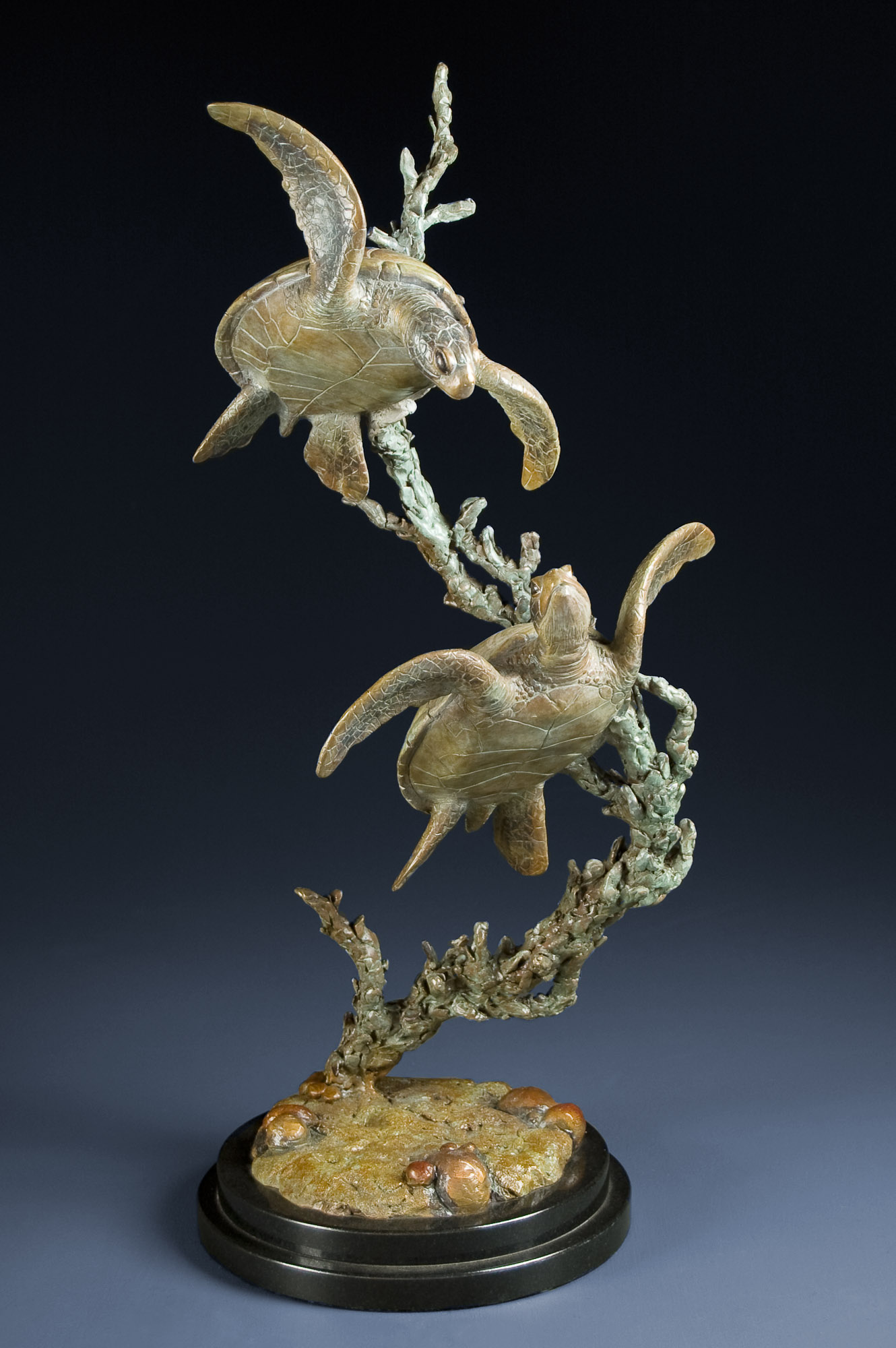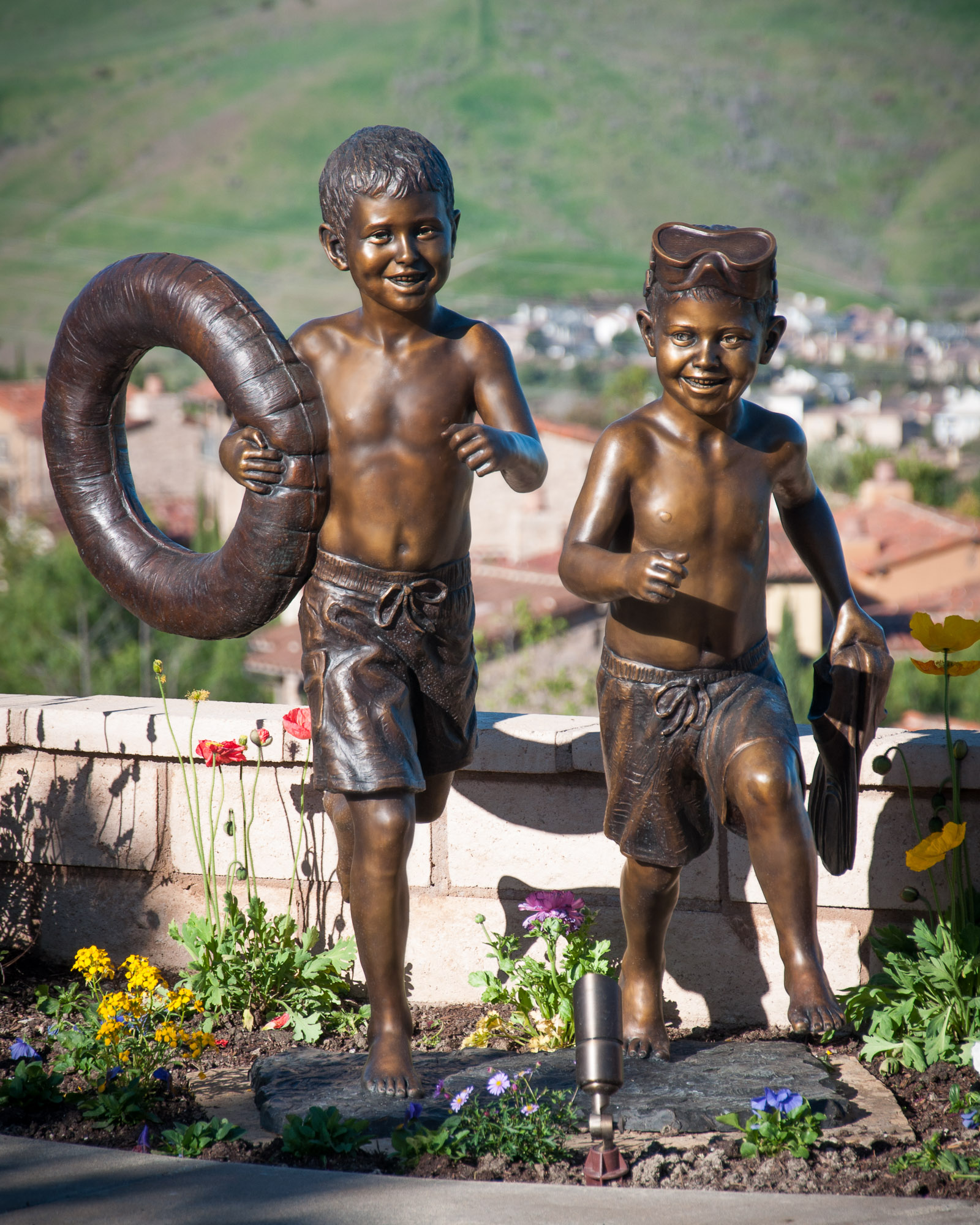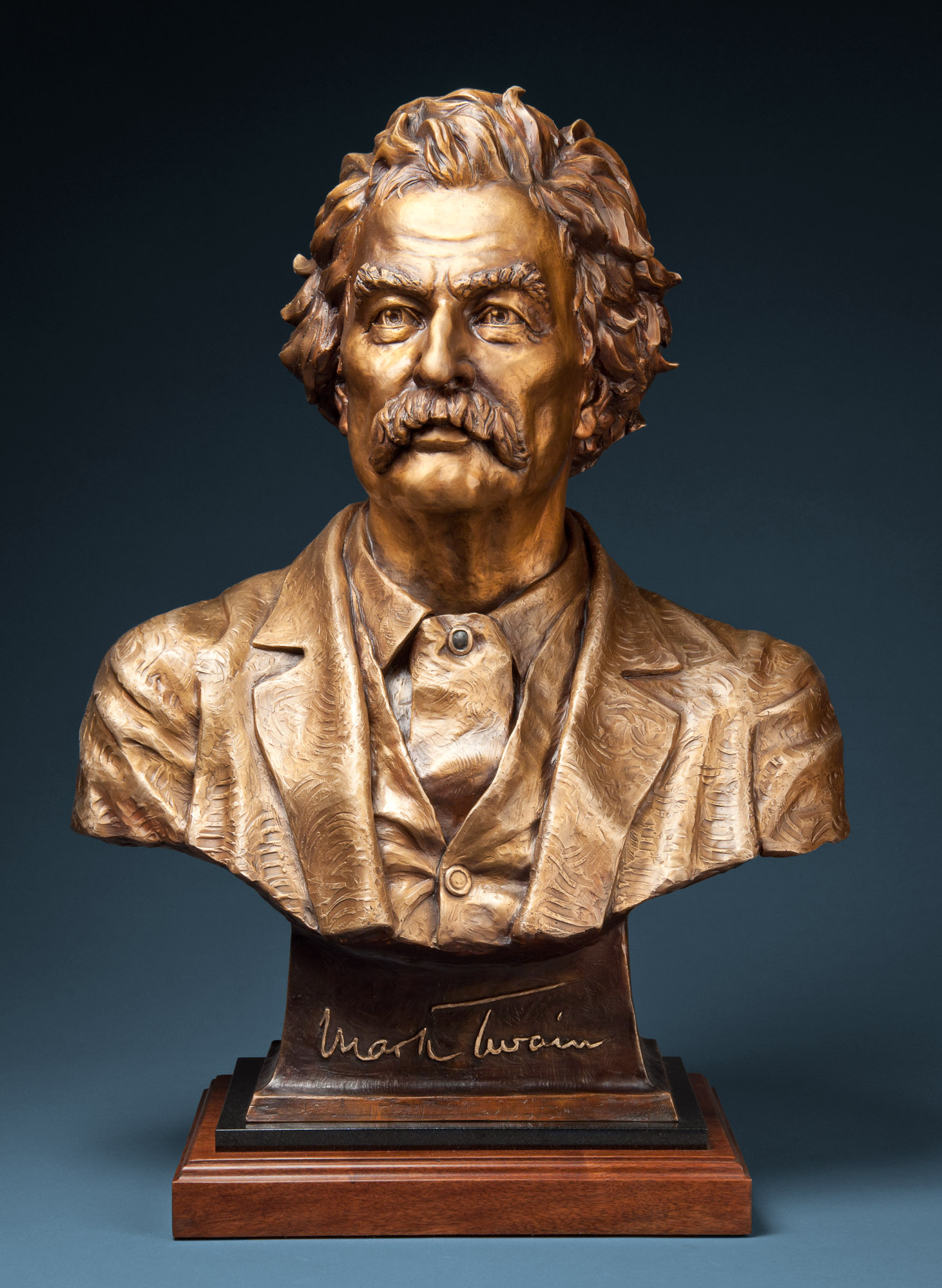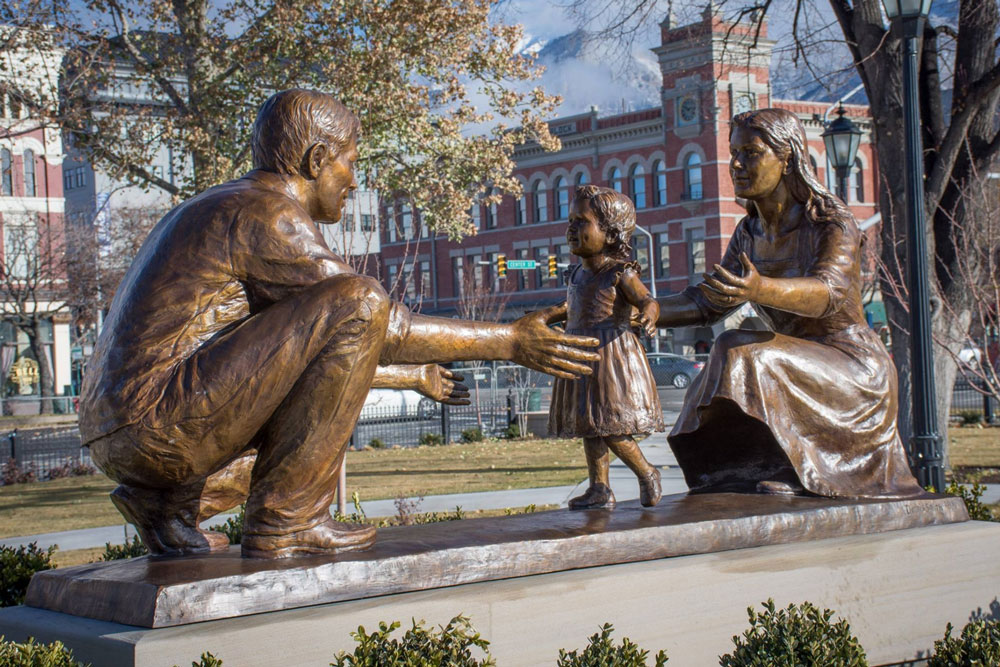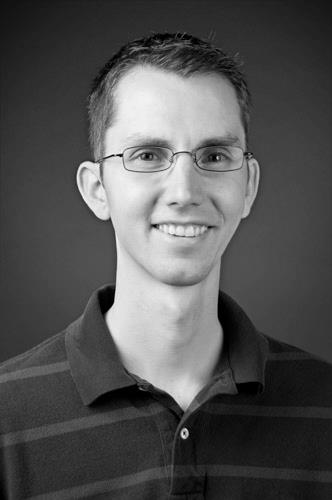Melissa Leaym-Fernandez is a painter, teacher, activist, consultant, runner, grant writer, and lover of elephants. She has numerous degrees from the University of Michigan; Eastern Michigan University; and the University of Michigan, Flint. She works as a teaching artist in Flint and lives in the Blue Water Area, near Port Huron, Michigan.
Tell us about your evolution as an artist. I have always been excited about the use of color. Yet I recently came to understand why and how I cling to certain colors more clearly. I have always loved the elephant. My biological father (who left my mother and I) is from Sri Lanka. I have always been drawn to the cultural colors of Sri Lanka and Southern India. As an early painter I just became excited about the elephant, as a subject matter. I found several similarities in the life of a herd and my own life. In a herd, the matriarch provides all—she is the leader, she delegates, she provides care. My mother did that for me as a child. In a herd the males come in from the wild to mate and then leave again—the do not engage in the raising, care or protection of the herd. See the similarities? I saw my mother as this strong, bold leader and that was reinforced in the matriarch of a strong herd. I love the texture, the energy, the personalities of elephants. I have researched them all over including the Detroit Zoo, the Woodland Park Zoo I Seattle, WA, African Lion Safari in Ontario, Canada and my favorite experience was while I lived in London, England.
In 1999 I was able to go into the paddock at the London Zoo and play with the three females! Super exciting! I was able to touch them, take photos, learn about their individual personalities, feel the textures of their skin and hair—plus get smelled up one side and down the other! It was a very exciting experience. To top it off, I was invited back anytime I wanted, as the elephants liked me so much (and probably because I was well behaved too!). I painted with a passion, fervor and had a blast.
My work started to change, or my responses to my own work, started to change about 2012—when I came home to a sewage flood that destroyed my studio. I lost about 27 paintings in varying forms of completion. It was horribly demoralizing. I found that people “loved” my work and aesthetic responses remained strong but sales were nonexistent. Businesses wanted my work as “eye candy” to improve the look of their spaces (i.e.: I pay to transport paintings, hang paintings and transport paintings back to the studio paintings but without any compensation). At this time, after the destruction of so much work, and the lack of sales I was really bitter. I would try to work, but to be honest, I felt quite betrayed by art. It seemed like everyone wanted a piece of my creativity for free and this was infuriating as my only goal is to get debt free. I painted infrequently and with anger, dark tones and abstractly.
More recently I have had some moments of clarity regarding my own creative processes and responses to art, my art. Currently, I am working as a Teaching Artist in the Flint Community Schools. Yes, that Flint, the one with the toxic water. I work in the alternative high school teaching the elements of art to kids who have been forgotten, are parents, have no parents, who have seen loved ones die; seen gun violence; been the perpetrator of the violence; can’t say a sentence without using “f—,” “ni—-” or “b—-;” and kids who society has written off, yet a society who still want to complain about teen pregnancy, welfare and the poor and needy in the urban setting. Yep, this is where I spend my days. I am here because I know what it is like to be the child victim of a violent act, poor, and belittle by those in leadership. I can relate. I realized that that I was, and am, angry. I find that that energy is coming out in the new works I have completed—which are a bit darker in color. I am angry that my students are forgotten; I am angry that Rick Snyder feels poisoning a city is acceptable. I am angry that I cannot do anything substantial to help my students other than show up each day and be there. I am angry that my kids believe that the way their lives are today is what they think their lives will be like forever. I realized that the cheery, bold, in-your-face color in my work, that aesthetic that makes the viewer say, “Oh, wow, I love that!” is just my emotional response to the violence in life, past and present. I paint to lifts others too. I know they feel the heaviness, the helplessness, the stress and my work is a moment of emotional release. In that moment, what I do matters and has power.
Your style is so colorful and positive. What is your approach to a new piece? As I start a new piece, I look for shapes that I like. I also look for inspirational images that have an emotional context. I think about possible connections that could be made with text. For instance, if I want to do an image of a mother and calf elephant I would look for photos in my own collections, or elsewhere that inspire. I use that photo to create a base shape and then I let the colors ideas flow. I may lay a lean layer or two to work out color ideas in my head and then I paint it out. I am finding now that I know why I paint, that ideas are starting to really flow again and I love this!
What do you think of art in the Church these days? I think the art in the church is extremely limited but I feel like the leaders, at a very minuscule level, are trying to change that. Not fast enough for my liking though and that change may be from the directors of the museum vs. actual church leaders. As I was in the worldwide competition with a large 5×5’ painting the art that was purchased and won awards was the same old boring stuff, unimaginative, figurative—bleh. I submitted work to be sold (prints) at the BYU Bookstore. I was told, “your work won’t sell, why don’t you do a Noah’s ark image and we will try that.” At Deseret Book for instance (and I do not know if the Church still owns this business) all the work is saturated in browns, figurative and literally from the scriptures. There is so much more to uplifting art. My work celebrates nature—the creation of our world is a big part of the Plan of Salvation yet I have been told “your work really is not part of the market”. Well, lets be leaders and change the market wants! Tell the people what is hot and they will buy it! I don’t find images saturated in deep browns all that uplifting to the spirit. I think clean bold color, strategically placed in a home can inspire, uplift and empower the viewer for a daily dose of happy.
What are you working on next? I just finished a couple of large paintings in response to the toxic, poisoned water in Flint. Last night I started a new painting (2×6’) of running zebras. I like to work bigger, the 3×4’ canvas is my favorite size though I do go much larger. I just finished two 3×6’ canvases of running zebras too. Something about the stripes and the motion, the energy of running and the question the images provoke—are they running to someplace or away from something? I also plan to complete more mother and calf image this summer—all oil on canvas. Also, this summer I will be working on my USA watercolor series—the shape of the state with layers and layers of text inside that describes that state. This work is more tedious and takes more research but I want to complete a painting for each state in the USA and possibly the provinces in Canada, as they are super near me—just across the river! I also have a more trendy series called “Love My Michigan!” I will probably add some new pieces to that collection as well.
